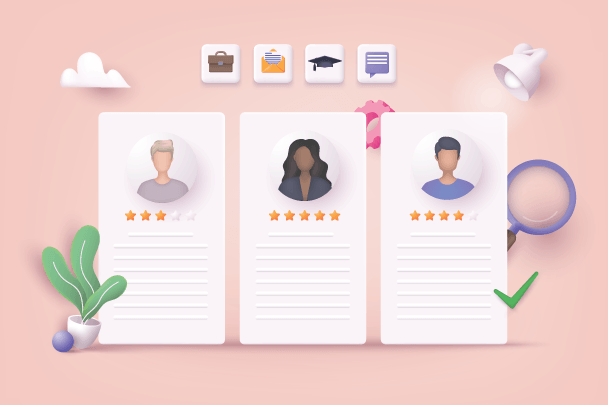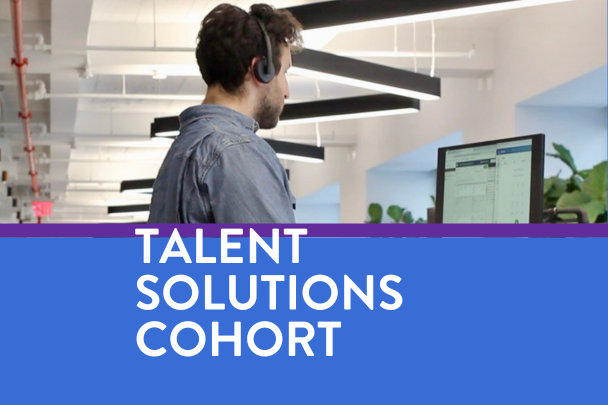More than ever, businesses are investing in Diversity, Equity, and Inclusion (DEI) programs. We continue to learn more about biases and how hiring decisions can be influenced, even unconsciously. As a professional working in the Talent Technology space for over a decade, I’ve gained exposure to a variety of contingent labor technologies with features built in that companies can leverage to help set and achieve their DEI goals. Consider the technologies I’ve listed below. If you have them in your current ecosystem, be sure you are well-versed in their vast capabilities. If you don’t, but are considering one in the future, here are some tips to keep in mind as you move forward in your vetting and selection process.
3 Talent Technologies That Can Optimize DEI Outcomes
1. Vendor Management System (VMS)
As you develop contingent labor plans for your future workforce, research the benefits of partnering with a VMS and how they can support your diversity hiring goals. For example, with a feature that removes identifying factors from candidate submissions such as name, address, education/degree/university, and more, a VMS can help assure your hiring managers avoid unconscious biases in their candidate selection process.
Did you know that you can rely on your VMS not only to measure the diversity of your contingent talent pool, but also the diversity of your supplier base? Whether tracking diversity spend for corporate social responsibility commitments, enterprise procurement goals, or to illustrate how your suppliers align with overarching business goals to better inform your overall Preferred Supplier List (PSL), your progress depends on obtaining accurate data. One such VMS, SimplifyVMS, provides this data via reporting tools that can help track diversity supplier spend and associated data elements.
Patrick Chartrand, Vice President of Partnerships & Strategy at SimplifyVMS, a Certified Diverse Supplier and MBE, says, “Relationships are what gives businesses a competitive edge, especially in the current talent market. Bringing people from different backgrounds together to share different perspectives is a powerful way to build better communities at work.”
2. CANDIDATE RELATIONSHIP MANAGEMENT (CRM)
As a strategic tool used to source and maintain warm pipelines of talent for future recruitment, a CRM system can provide invaluable reporting & analytics when added to your HR tech ecosystem. You can obtain a clear picture of your candidate diversity footprint by first collecting and analyzing voluntarily provided demographic data (rule of thumb to remain EEOC compliant is to always make the self-identifying info request optional). From there, you can set achievable goals and utilize your CRM to help you meet/exceed them. Atrium’s Executive Director of Enterprise Recruitment, Lauren Post, says “With compliance expertise, targeted recruitment plans, and CRM software, we are thrilled to see our partners surpass DEI hiring objectives, while simultaneously reducing overhead.”
Furthermore, another integral functionality that the majority of CRMs offer are digital talent communities. These digital networks allow companies to establish and maintain relationships with both active and passive candidates, while leveraging your employer brand to curate a community.
3. DIRECT SOURCING (DS) MODELS POWERED BY DIGITAL TALENT COMMUNITIES
To build the diverse, inclusive candidate pipelines your future workforce demands, you can leverage a comprehensive Talent Acquisition strategy powered by a Direct Sourcing model. When you promote DEI within your recruitment marketing efforts, you can more easily engage diverse talent. In fact, a commonly used DS model tactic is utilizing digital talent communities to pipeline targeted talent in groups which can be set up by job title, functional area or diversity group, i.e., software engineer, marketing, women in tech, etc.
Employee Resource Groups (ERGs) are employee-led groups that foster inclusivity and build community with a goal of providing personal and professional support to its members. Today, many companies are mirroring the inclusive nature of these groups to improve the candidate experience and create more thoughtful talent communities with a goal of increasing workplace diversity. Much like ERGs, individuals can join digital talent communities based on common interests, backgrounds, culture, gender, faith, race, disabilities, affiliations, and other collective characteristics. For example, in GE’s Talent Community, powered by Phenom People, candidates are asked to select “GE Initiatives of Interest” – which directly correlate to the ERGs a candidate may join post-hire at GE. In turn, GE is able to fold their DEI post-hire strategy into their talent acquisition strategy.
The power of today’s Talent Technology is immense and when harnessed properly, can be leveraged to drive DEI progress for your entire contingent workforce. It’s important to remember that if you’re not being inclusive of your contingent workforce when evaluating hiring data, you are missing a major opportunity. As Brian Spour, VP of Customer Success for TalentNet, a woman-owned Direct Sourcing Platform, recently shared with our team, “The journey [we] have taken to understand how to be a positive driver in the DE&I movement has led us down a path of listening, learning, and engaging many different experts in the space. It is important to get this right, because if we don’t or if we only dip our toe in the water, not only will we not see the results we’re hoping for, but it risks doing harm or pushing people away from taking an active role in this topic.”
By placing a strategic focus on your contingent talent programs and their corresponding tech, you can more effectively improve your diversity hiring results.








